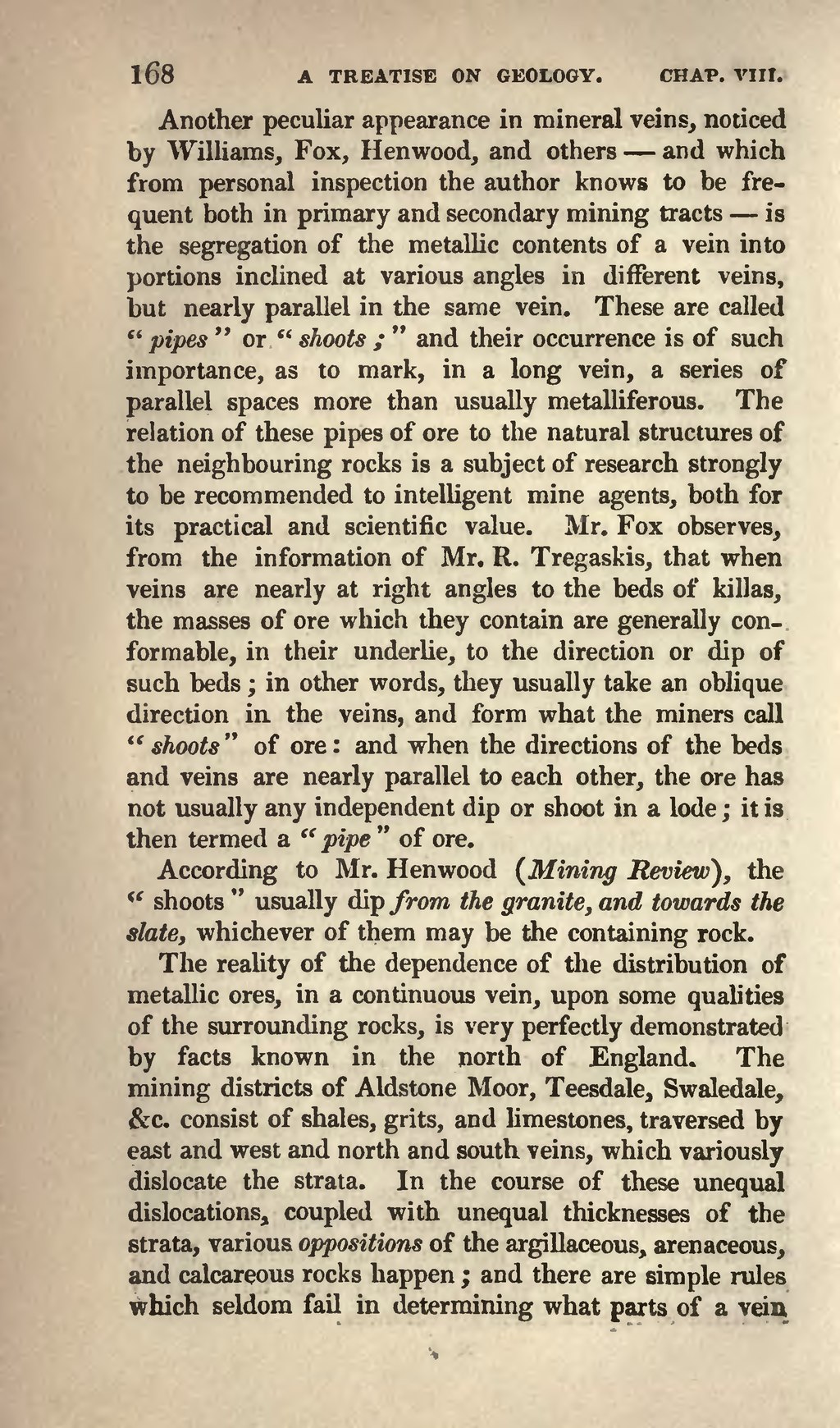Another peculiar appearance in mineral veins, noticed by Williams, Fox, Henwood, and others—and which from personal inspection the author knows to be frequent both in primary and secondary mining tracts is the segregation of the metallic contents of a vein into portions inclined at various angles in different veins, but nearly parallel in the same vein. These are called "pipes" or "shoots;" and their occurrence is of such importance, as to mark, in a long vein, a series of parallel spaces more than usually metalliferous. The relation of these pipes of ore to the natural structures of the neighbouring rocks is a subject of research strongly to be recommended to intelligent mine agents, both for its practical and scientific value. Mr. Fox observes, from the information of Mr. R. Tregaskis, that when veins are nearly at right angles to the beds of killas, the masses of ore which they contain are generally conformable, in their underlie, to the direction or dip of such beds; in other words, they usually take an oblique direction in. the veins, and form what the miners call "shoots" of ore: and when the directions of the beds and veins are nearly parallel to each other, the ore has not usually any independent dip or shoot in a lode; it is then termed a "pipe" of ore.
According to Mr. Kenwood (Mining Review), the "shoots" usually dip from the granite, and towards the slate, whichever of them may be the containing rock.
The reality of the dependence of the distribution of metallic ores, in a continuous vein, upon some qualities of the surrounding rocks, is very perfectly demonstrated by facts known in the north of England. The mining districts of Aldstone Moor, Teesdale, Swaledale, &c. consist of shales, grits, and limestones, traversed by east and west and north and south veins, which variously dislocate the strata. In the course of these unequal dislocations, coupled with unequal thicknesses of the strata, various oppositions of the argillaceous, arenaceous, and calcareous rocks happen; and there are simple rules which seldom fail in determining what parts of a vein
